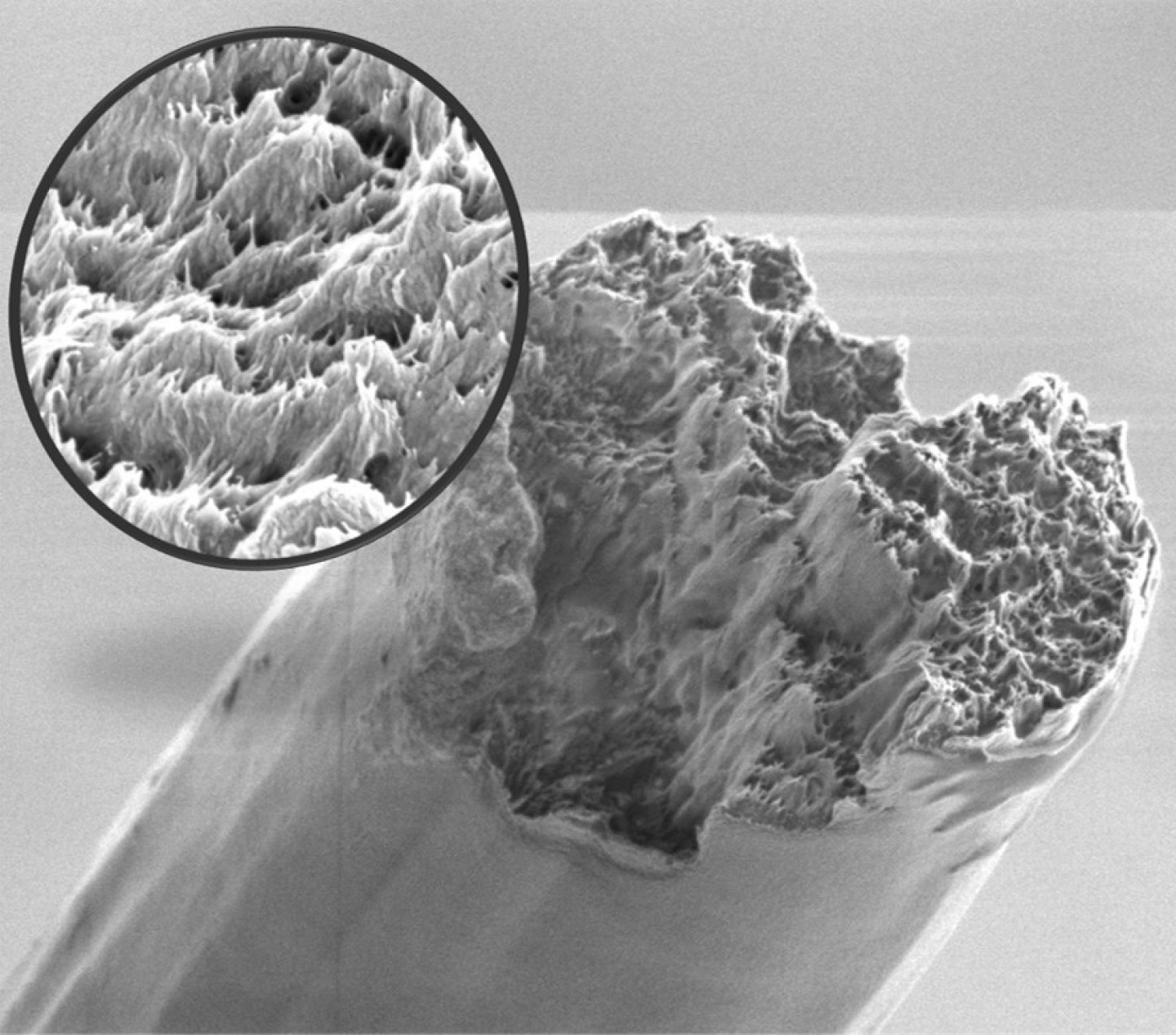Compact arrangements of matter at the nano-scale and molecular-level are key to developing 'supermaterials'.
By having an understanding of particle size, chemical interactions, and alignments of fibers, researchers are successfully transferring material properties from the nanoscale to the macroscale.
A team of researchers from KTH Royal Institute of Technology in Stockholm have developed a strong biodesign material from biodegradable cellulose nanofibers (the building blocks to plant life). The material is lightweight, stronger than spider silk (once considered the strongest biomaterial), and even stronger than conventional building materials such as steel.
The Swedish researchers suspended the cellulose fibers in water and then fed the material into a 1-millimetre wide channel which was then saturated in deionized water (with a low PH-value). The nanofibers were squeezed together, aligning them into a packed, hierarchical order, creating a biomaterial with super-strong nanofibers.
The ultra-strong cellulose nanofibers are 2-5 nanometers in diameter and up to 700 nanometers in length. When testing the material’s mechanical load, it showed a tensile strength of 86 gigapascals (GPa) and a tensile strength of 1.57 GPa- stronger than glass fibers, steel and spider silk.
The material can be woven into a super strong biodegradable fabric and can be used for larger structures whilst retaining its tensile strength and ability to withstand mechanical load. This super strength nano-cellulose and paves the way for developing a light-weight high-performance material that can be used instead of plastic.
To read more about this research click here


